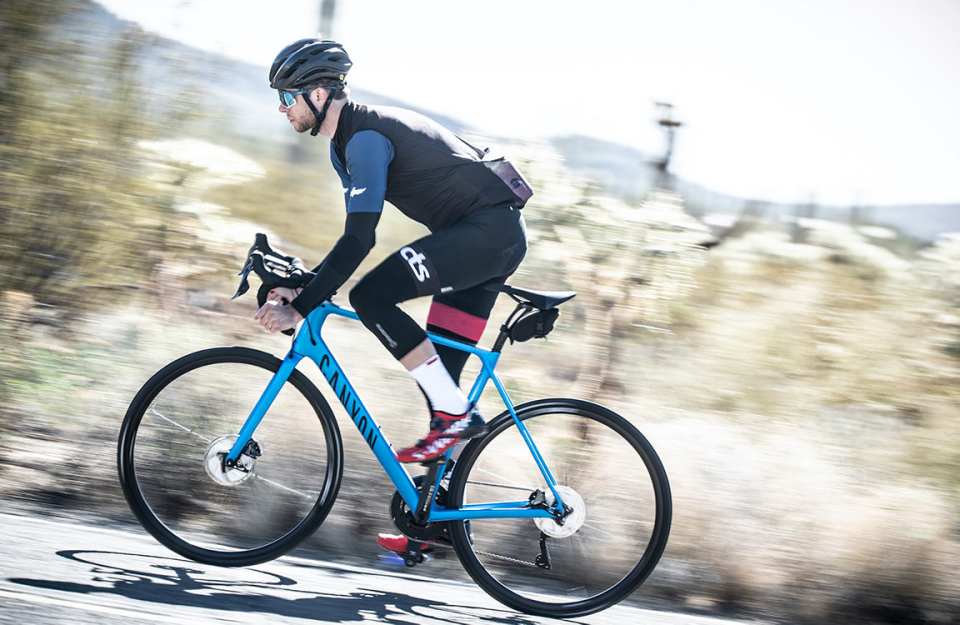Three Best Climbing Workouts for Sustained Power, Surge Strength, and Winning Attacks
There are three main areas that need to be addressed when you want to become a better, stronger, and faster climber. First you have to increase your maximum sustainable power. This increases the pace you can sustain for prolonged climbs, and in the best case it also means you can ride more comfortably while others are riding at their maximum sustainable power outputs. Second, you have to develop the “agility” to handle repeated changes in pace on a long climb, whether they are caused by a change in the pitch of the climb or an attack or surge from other riders in the pack. And last, you have to develop the power to launch an attack and – and this is the critical part, because anyone can attack – continue riding fast to the summit.

Workout 1: Climbing Repeats
ClimbingRepeat Intervals are a straight-forward workout designed to increase your maximum sustainable climbing power. The intensity for the intervals is just below your maximum sustainable power output, meaning you’ll be asking for full power from your aerobic system and also tapping into your glycolytic system. Accumulating time at this intensity forces your body to adapt so you can produce more power from the aerobic engine, which means you’ll either be able to stay with the leaders more comfortably or have the power to push the pace even higher.
ClimbingRepeats are very effective for increasing the maximum power you can sustain for the duration of a long climb. The intensity for these intervals is 95-100% of your CTS Field Test average power (CTS Field Test instructions and calculations), 95-97% of your CTS Field Test average heart rate, or an 8-9 on a scale of 1-10. During these efforts, you should feel like you’re going hard, but that you could accelerate in response to an attack if you needed to. These efforts should not be as intense as a time trial.
Beginners should complete two, eight-minute ClimbingRepeats. Intermediate riders should complete three eight-minute intervals, and advanced riders should complete three 12-minute intervals. The recovery between intervals should be half the duration of the interval (4min for 8min intervals, 6min for 12min intervals). Be careful not to start the intervals too hard; spend the first 90 seconds gradually getting up to speed.
Workout #2: Over Under Intervals
OverUnder Intervals use a combination of intensities to mimic the changes in intensity you’ll experience on long climbs, especially during races. The “Under” intensity is your SteadyState intensity range, and the “Over” intensity is your ClimbingRepeat range (both are described below). By alternating between these two intensity levels during a sustained interval, you develop the “agility” to handle changes in pace during hard, sustained efforts. More specifically, the harder surges within the interval generate more lactate in your muscles, and then you force your body to process this lactate while you’re still riding at a relatively high intensity. This workout can be performed on a flat road, rolling hills, or a sustained climb that’s relatively gradual (3 to 6 percent grade). It is difficult to accomplish this workout on a steep climb, because the pitch often makes it difficult to control your effort level. Your gearing should be moderate, and pedal cadence should be high (100 rpm or higher) if you’re riding on flat ground or small rollers. Pedal cadence should be above 85 rpm if you’re completing the intervals on a gradual climb.
To complete the interval, bring your intensity up to your SS range during the first 45 to 60 seconds. Maintain this heart rate intensity for the prescribed Under time and then increase your intensity to your Over intensity for the prescribed time. At the end of this Over time, return to your Under intensity range and continue riding at this level of effort until it’s once again time to return to your Over intensity. Continue alternating this way until the end of the interval. OverUnder Intervals always end with a period at Over intensity. Recovery periods between intervals are typically about half the length of the work interval. Note: A more advanced version of this interval would alternate between SS and PowerInterval (max effort) intensities instead of SS and CR intensities.
Note: The parameters of the OU intervals are written as: 3×12 OU (2U, 1O). This should be read as follows: Three intervals of 12 minutes. During the 12-minute intervals, the first 2 minutes should be at your Under intensity (2U). After two minutes, accelerate to your Over intensity for one minute (1O), before returning to your Under Intensity for another two minutes. Continue alternating in this manner – in this example you’d complete 4 cycles of Under and Over – until the end of the interval. Spin easy during the recovery period before starting the next interval.
Beginners should complete 3×9 OU (2U, 1O), 5 minutes easy spinning between intervals. Intermediate riders should complete 3×12 OU (2U, 1O), 6 minutes easy spinning between intervals. And Advanced riders should complete 3×15 OU (2U, 1O), 8 minutes easy spinning between intervals.
Training Intensities for OverUnders: HR: 92–94 percent of highest average heart rate from CTS Field Test (Under) alternating with 95–97 percent (Over). Power: 86–90 percent of highest average CTS Field Test power (Under) alternating with 95–100 percent (Over). Perceived Exertion: 8 (Under) alternating with 9 (Over).
Workout #3: Threshold Ladders
The goal of Threshold Ladders is to replicate the process of attacking and staying away from a chase group. Each 12-minute interval starts with a maximal effort for two minutes (110+% of Field Test power, 100+% of Field Test heart rate, RPE of 10), and then you step the intensity down to your ClimbingRepeat intensity range for four minutes. The intensity range for ClimbingRepeats is 95-100% of Field Test power, 95-97% of Field Test heart rate, RPE of 8 out of 10. At the end of this 4-minute period, step your intensity down one more notch to your SteadyState range (86-90% of Field Test power, 92-94% of Field Test heart rate, RPE of 7) for 6 minutes. These intervals are very difficult because you start out with an intense effort that generates a lot of lactate. You’ll still be processing that lactate as your riding at ClimbingRepeat intensity, and still dealing with it throughout the SteadyState portion as well. Beginners and intermediate riders should complete two intervals, and advanced riders should complete three intervals. Take 6 minutes of easy spinning recovery between intervals.
Click here for CTS Field Test Instructions
To find out more, please visit: https://trainright.com/cycling-climbing-workouts-sustained-power-surge-strength-winning-attacks/
FREE 14 DAY MEMBERSHIP TRIAL
Gran Fondo Guide fans, click on the image above and get TrainRight Membership for a 14 day no obligation trial. TrainRight Membership comes with a 30-day money-back guarantee!
About CTS
As it has since 2000, Carmichael Training Systems leads the endurance coaching industry with proven and innovative products, services, and content. And the results speak for themselves; no other coaching company produces more champions, in such a wide variety of sports and age groups, than CTS.
For more information, please visit: https://trainright.com

